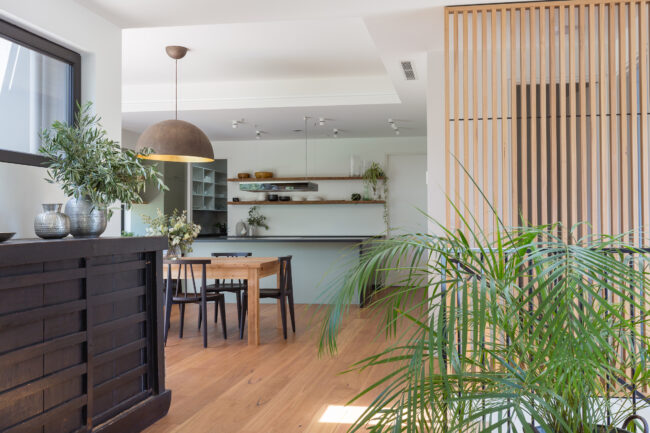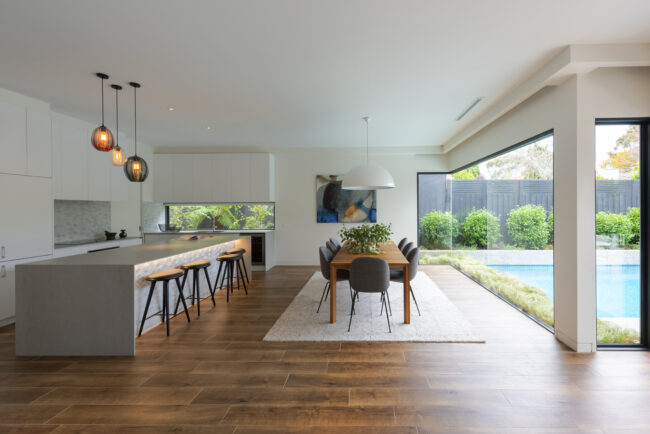Getting your flooring right the first time around is crucial to the overall look and feel of your home. Flooring covers large areas of your space and interconnects different zones via the use of a continued finish so it can be expensive and challenging to retrofit if you make a mistake.
When choosing flooring, there are many factors to consider, including performance, durability, cleaning, maintenance, sustainability, thermal mass, noise, aesthetics, and comfort. Follow our guide below to help you make an informed decision on your flooring:
- Performance – Consider the lifestyle requirements of your family. Are you big entertainers or do you prefer not to wear shoes inside? Do you have children, teenagers or pets who are more likely to wear down the flooring? These are important factors to consider when determining the performance needs of your flooring.
- Thickness – The thickness of flooring affects how it will perform with other flooring and design elements, such as skirting boardsand door levels. Tiles typically range from 10-15mm in thickness, while engineered timber and solid timber typically range from 15-20mm. When choosing flooring for a new build, the type of flooring and its thickness will also affect the slab pour.
- Durability – Durability is a key factor to consider when choosing flooring. How durable does the flooring need to be, and does it need to be scratch and slip resistant? Additionally, consider factors such as UV resistance to ensure the flooring won’t discolor over time when exposed to sunlight.
- Cleaning – Consider how easy the flooring is to clean and if any special cleaning products are needed to maintain it. Textured flooring may be more difficult to clean compared to smooth surfaces, while engineered timber and solid timber typically require special cleaning products to keep them in premium condition.
- Maintenance – What type of maintenance is required for the flooring? For example, solid timber flooring may require sanding and oiling, while others may require polishing. Consider the time and effort required to maintain the flooring to ensure it remains in good condition.
- Environmental and Sustainability Criteria – Consider the material composition of the flooring and whether it contains any toxic components, such as VOCs or plastics. Choose flooring made from recycled components, renewable resources, or with a green tag certification. Flooring options like cork, timber, bamboo, and tiles are good choices for their sustainability criteria.
- Thermal Mass – Thermal mass is an important attribute to consider if you want your home to be warm in the winter. Tile flooring is a great consideration for thermal mass as it transfers warmth from the slab to the surface of the floor. However, timber flooring does not perform well in this regard, as it retains heat
- Noise and Noise Mitigation – Consider how sound travels between the levels of your home and whether it will impact your flooring choice. Carpeting is good at absorbing noise and sounds, while tiles and hard surfaces can cause noise to bounce around. Consider using carpeting in high-traffic areas, such as the stairs, home office, and retreat areas, to mitigate noise. (Learn more about minimising noise in your home here.
- Aesthetics – How will the flooring look in your home? Will it be consistent with the other rooms and spaces in your home? Flooring sets the tone for the space and other design elements so choose a flooring that meets your aesthetic needs.
- Comfort – Consider how the flooring feels underfoot, including its temperature and softness. Do you wear shoes inside, or are you often barefoot? Will you have children playing on the floor, and do they have a soft, comfortable space to do so?




